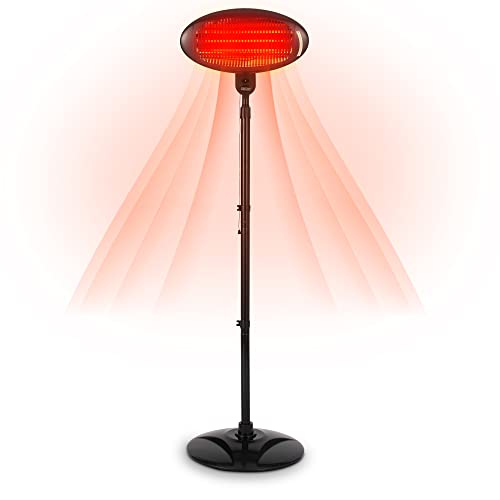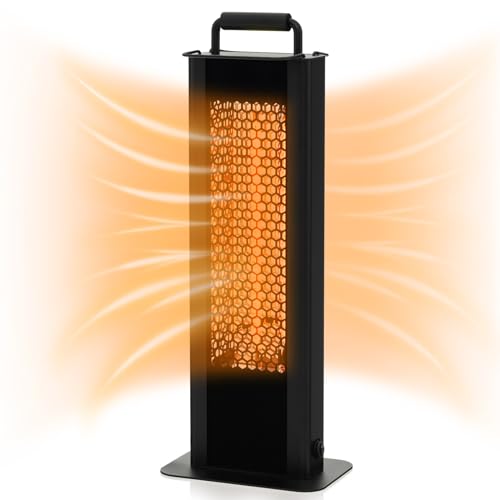Nine Things That Your Parent Teach You About Gas For Patio Heater

2024-11-22 17:23
23
0
0
0
본문
 Gas For Patio Heater
Gas For Patio HeaterThe kind of fuel used in patio heaters can affect the price and output of heat regardless of whether you purchase the heaters for your own use or for use in a restaurant. There are three major kinds of gas-powered patio heaters which include propane, natural gas and electricity.
Natural gas patio heaters are connected to the gas line in your home and never run out of fuel. However, they require professional installation.
Safety
Patio heaters are a great way to extend your outdoor living time by providing warmth and comfort. These heating solutions come in a variety of styles and are powered by electricity, propane or gas. Whatever fuel type you choose there are some important safety aspects to consider.
Propane is a popular choice for outdoor heaters due to the fact that it is safe and can be stored in small patio gas containers. It has low melting points and can therefore be used in colder weather. It also doesn't release an unpleasant smell while burning.
The key to keeping your patio heater safe is to follow instructions of the manufacturer for use and maintenance. Only adults who know the instructions given by the manufacturer are required to operate a patio heater. Pets and children should always be kept away. Always ensure proper ventilation. Propane and natural gas patio heaters emit deadly carbon monoxide when employed inside or in an enclosed space.
If your patio heater comes with a pilot light and thermocouple, make sure the access panel that allows you to access these components is secured. This access panel can easily become loose and move away from the pilot, which can cause your heater to shut down. You can usually fix this issue by gently pressing the two pieces with pliers.
By adding guards or heat shields to your outdoor heater, you can enhance the safety of your heater. Also, make sure it is not close to anything that is flammable. Illuminating the area around your patio heater or fire table is also vital. This can be accomplished with solar-powered pathway lights or ambient lighting.
Finally, it is crucial to regularly inspect your patio heater for any signs of wear and tear. If you notice any damage or leaky components, they should be replaced or repaired immediately. It is recommended that the gas cylinder be kept in a secure location and away from extreme weather conditions.
Cost
Gas patio heaters are available in various sizes and offer a powerful heating capacity. They can warm a large space quickly and efficiently, making them popular in commercial gas patio heaters spaces and spacious outdoor areas. However, they usually cost more than electric heaters because of their fuel costs. Electric heaters are also more environmentally friendly and help to achieve sustainability and energy conservation goals.
The lifespan and performance of your patio heater will be affected by the fuel you select. Propane and Butane are both commonly employed for patio heaters. However there are some differences in their heating efficiency and boiling points. Propane is generally preferred for its lower boiling point, which means that it works well even down to 40oC. Butane however struggles to vaporise at temperatures below -420oC. This means that butane patio heaters will soon run out of fuel in very cold conditions.
There are a myriad of elements that can affect the efficiency of patio heaters, including design, gas type, and environmental conditions. A freestanding patio heater is typically less efficient than a patio heater that is buried in the ground because it loses heat to the air. Natural gas fire patio heater heaters are typically more efficient than propane models.
Patio heaters come in a variety of sizes and styles, from tabletop to floor-standing. You can also select either propane or natural models and decide on a ceiling-mounted or wall-mounted or stand-alone option. Lowe's provides a range of propane patio heaters, with heating outputs that range from 9500 and 48000 BTU.
While a gas-powered patio heater is an excellent option to extend your outdoor time, it can be expensive to operate. The operating cost of a gas heater is usually higher than that of an electric model and requires a constant supply of fuel. Before making a purchase, it is important to take into consideration maintenance requirements and security features.
A professional installer can help you estimate the cost of installation. This includes local delivery of the materials and equipment, as well as service provider transportation from and to the job site the time for setting up and labor, as well as mobilization, as well as any costs for materials or services required to prepare the area. Additionally, the estimate should include the cost of removing, relocating or modifying existing framing, fixtures and surface finishes HVAC, electrical, and plumbing systems, and bringing them into compliance with the current building codes.
Portability
Patio heaters can be an excellent method to improve the value of an outdoor space, whether at the home or in a commercial. They can bring a warm ambience to the space and create an inviting centre for people to gather around. They are frequent in bars and pubs where they attract customers. People will spend longer at a table with a heater for the patio than those without.
Gas heaters are more flexible than electric heaters. Electric heaters are generally wired into a wall and are therefore tied to the wall. Gas heaters are more flexible than electric models that are typically restricted by the length or size of the power cord. The majority of patio heaters come with detailed instructions and all the components needed to put them together. This means you can have a patio heater up and running within a half hour of its arrival and without having to hire a professional electrician.
Gas patio heaters are fueled by propane or butane liquefied petroleum gas (LPG) Cylinders and then make use of this fuel to create heat. The flames of the burner are directed against a perforated metal screen, which is then reflected upwards to release the heat out into the surrounding area. A silvered hood over the top of the burner further reduces the loss of heat by reflecting infrared radiation towards the patio.
Propane patio heaters are portable and provide a significant amount of warmth for a relatively small footprint. They are an excellent choice for homeowners who wish to keep their patios warm in the winter months, and can be used in conjunction with a barbecue or fire pit to make the space even more relaxing. Propane heaters are available in a wide range of sizes and styles, so you'll be able to choose one that is suitable for your outdoor space and requirements.
Heat output
When selecting a patio heater, it is important to take into account the power output. This is measured in British Thermal Units (BTU). A higher BTU number means that the unit can provide more heat. Propane is the most popular fuel for heaters for patios because it has a lower boiling point than butane and will function well even in very cold temperatures. In fact, propane can be used in all kinds of outdoor patio heaters.
Gas patio heaters can be a wonderful option to any outdoor space. It produces radiant heat which counteracts the coolness of the evening air and creates an inviting atmosphere to gather around. It is perfect for outdoor gas patio heater seating areas in pubs and restaurants in which customers are more likely to stay around for their drinks or meals if the temperature is pleasant.
Patio heaters come in a variety of different models, such as the standalone gas patio fires towers which are visible outside of many bars and restaurants and portable heaters which use propane tanks readily available. These heaters are suitable for commercial and residential applications. They are relatively cheap to operate, generating plenty of heat for large outdoor areas. Some make use of ceramic fascias to distribute the heat while others have a live flame that emits radiant energy into the space.
Some patio heaters are ideal for DIY assembly. They include a complete set of composite parts and detailed instructions showing how to put them together. However, the process of installation is more complex for natural gas or propane heaters, since they require an expert to connect them to the gas line and then install an electrical socket.
Patio heaters that require a gas cylinder come with an additional burner on top of the pole that burns propane, butane or natural gas LPG. They also have a reflector which helps to direct the heat and reduce the loss of heat due to conduction. These models also require gas regulators that are compatible with the pressure of the cylinder, to ensure safe and efficient operation.
 Patio heaters release gases such as carbon monoxide and other hydrocarbons. It should only be used in a well-ventilated area and not in a restricted space. A closed space could increase the oxygen content of the air, which could lead to carbon monoxide poisoning and other serious health issues.
Patio heaters release gases such as carbon monoxide and other hydrocarbons. It should only be used in a well-ventilated area and not in a restricted space. A closed space could increase the oxygen content of the air, which could lead to carbon monoxide poisoning and other serious health issues.
0
0
로그인 후 추천 또는 비추천하실 수 있습니다.







댓글목록0
댓글 포인트 안내